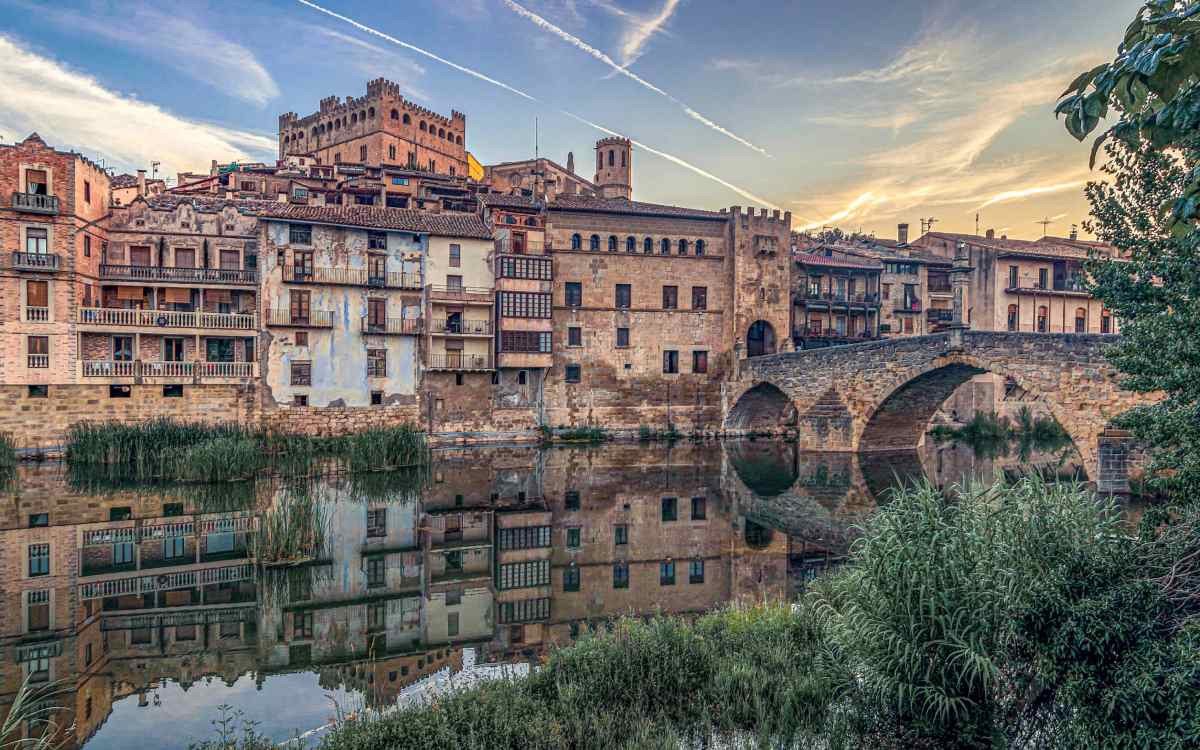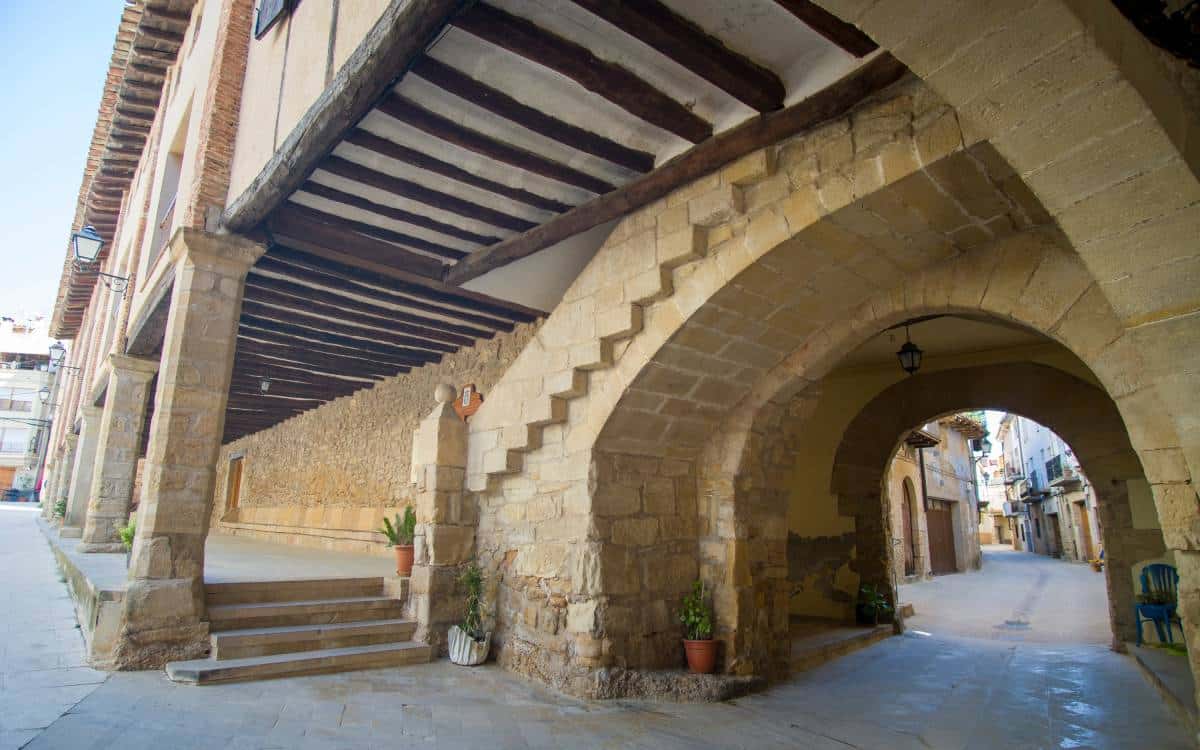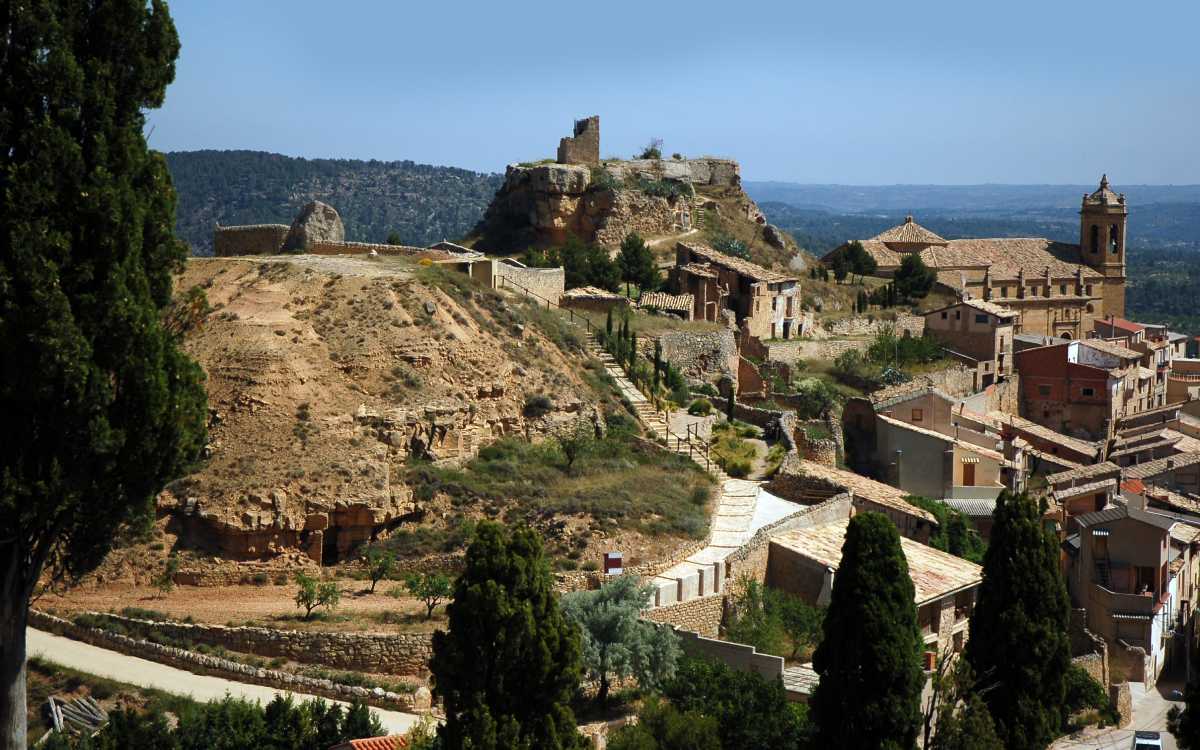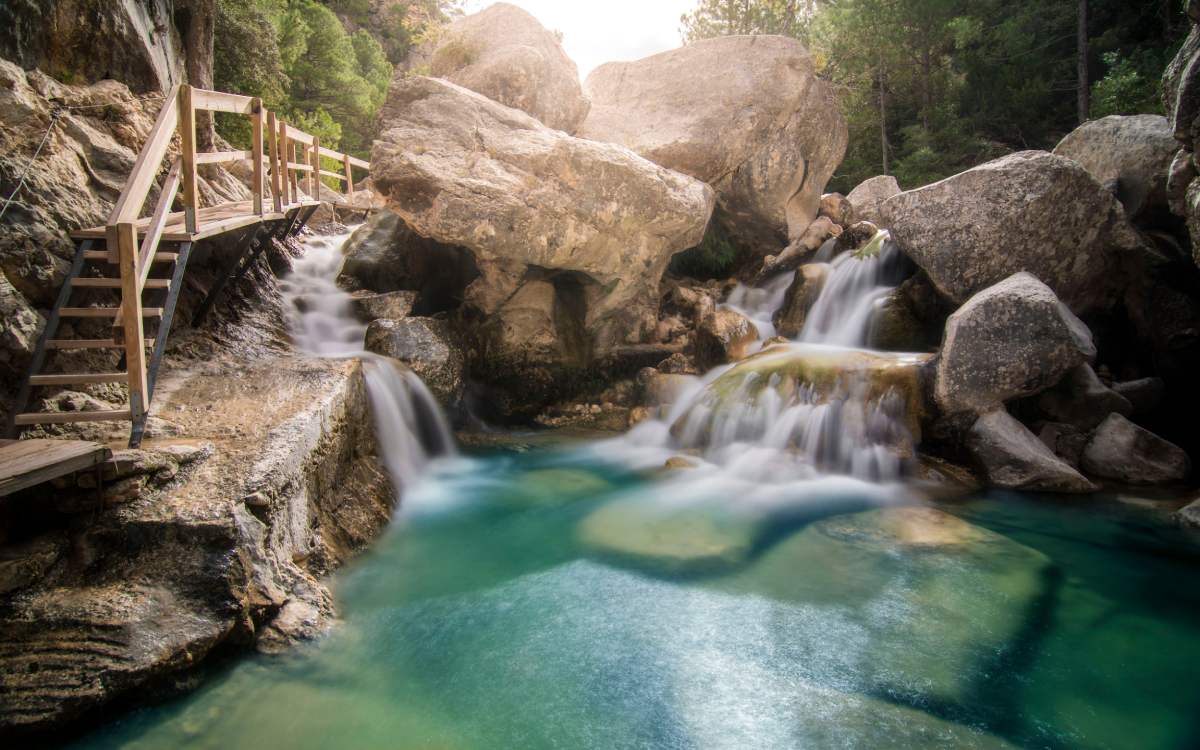
Does Spain have its own Tuscany? Yes, it does. And it is completely wonderful. On the borderline between Cataluña and Aragón, you will find the Matarraña region. This area belongs to Teruel and remains barely unknown, but it includes some of the most beautiful villages in Spain. And it’s no surprise. Each of them exudes a medieval essence that, combined with the typical calm of the rural areas, makes it the perfect place to enjoy a relaxing experience in nature.
A visit to the ‘Spanish Tuscany’ feels like falling in love. Stone bridges, rivers, landscapes that look straight out of a fairytale, cave paintings… 18 villages paint one of the most beautiful pictures in Spain. But if we were to choose, these are the 7 villages in the ‘Spanish Tuscany’ that you should definitely visit.

Valderrobres. | Shutterstock
Valderrobres is part of Asociación Los Pueblos Más Bonitos De España. It’s love at first sight. A medieval bridge crosses the course of the Matarraña river, a path that leads you to the tiny hanging houses of every possible colour. The magic of this place is unique and it begins with its great architectural richness.
Calle Mayor houses historic buildings like Casa Consistorial and Fonda Blanc, and it marks the route to Santa María la Mayor church. It’s a Gothic temple that you should definitely visit. And let’s not forget about the Valderrobres castle, built between the 14th and 15th centuries, that rises guarding the small stone houses and that provides a great view of the valley.

Ráfales. | Shutterstock
Ráfales is the perfect village to relax and appreciate great landscapes. Its picturesque stone streets, Molí de l’Hereu, an old oil mill restored today, the Gothic church to Nuestra Señora de la Asunción built in the 15th century… and a rural atmosphere that invites you to rest.

Nuestra Señora de la Asunción church, Calaceite. | Shutterstock
Besides being considered one of the most beautiful villages in the country, Calaceite is popular among gastronomy lovers since its economy is greatly based on oil production. Its surroundings are filled with premium and ecological oil farms, an oil whose taste is an experience itself. Near this area, you will find Iberian hamlets, such as San Antonio and its archaeological remains, and the route on the funerary tumulus of the Matarraña river that date back to the Iron Age.
The village itself is worth a visit too. Declared a Historical Artistic Site, Calaceite is considered by many to be the cultural centre of Matarraña. Its Plaza de España, the Maella street, the Ayuntamiento and Nuestra Señora de la Asunción church are true architectural wonders that you must see.

La Fresneda. | Shutterstock
Everyone who visits La Fresneda agrees that it looks straight out of a fairytale. Its old city centre, declared a Historical Artistic Site, is one of the most beautiful in the area. A walk through its palatial houses, the Compte tower, the convent and del Pilar chapel will take you back in time. The ruins of Santa Bárbara castle, destroyed in the Carlist Wars, are another mandatory stop.

Old street in Cretas. | Shutterstock
Although it is usually missed on the lists of the most beautiful villages in the ‘Spanish Tuscany’, Cretas is a wonder itself. It’s surrounded by vineyards and olive fields, an important hint of its gastronomic excellence. Eating in Cretas is a true delight for the palate, and its pastries hold the lead role.
This village of less than 600 inhabitants has turned into a destination for those who seek relaxation and athletic activities, favoured by the many cyclists and horse riders that visit every year. Its Iglesia de la Asunción, Casa Fàbrica Turull and San Antonio de Padua chapel are just a few of its many tourist attractions.

Peñarroya de Tastavins. | Shutterstock
Peñarroya de Tastavins stands out in the map and there are many reasons for it. The first is the great natural richness of its surroundings, which translates into cliffs, pine forests and routes for climbing lovers. The second one is a type of dinosaur that lived in this area more than 100 million years ago. Actually, the first exemplar of this dinosaur was found in this locality.
The third reason why this village is a mandatory stop is its Virgen de la Fuente sanctuary. It’s a building of great architectural richness that houses two hermitages, one guesthouse and a breathtaking fountain. This beautiful postcard is one of the main attractions in Peñarroya, along with the Santa María la Mayor church, declared a Historical Artistic Site.

Natural pools at Beceite. | Shutterstock
Besides having the traditional medieval richness of the ‘Spanish Tuscany’, Beceite is extremely well-known thanks to its fascinating natural surroundings. The route El Parrisal is the perfect excuse to enjoy the beauty of the close olive fields in the area while following the course of the Matarraña river. And the best part? The natural pools you will find on your way, perfect to refresh before following the path.
The route on Rocas del Masmut is a great choice as well. Due to its constant ascent and the short climbing stages, it’s made for those who are prepared on a physical and technical level. Its looks and its magic corners turn it into a clear example of the beauty of the ‘Spanish Tuscany’.
You can also read this article in Spanish here.